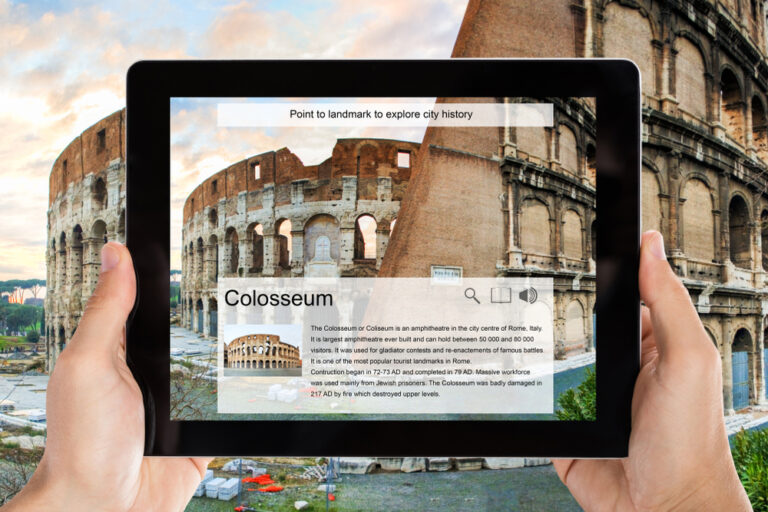At the intersection of technology and culture, Augmented Reality (AR) is emerging as a revolutionary tool that transforms the way we experience art, history, and creativity in general. From museums to outdoor exhibitions, AR is unlocking new dimensions of learning, interactivity and entertainment.
In this article, we will explore the benefits that AR brings to the cultural sector and how it is shaping the future of our cultural experience.
AR allows visitors to fully immerse themselves in cultural content in a way that was not possible before. Using mobile devices or special glasses, users can overlay digital information, historical reconstructions or even animated characters over the physical environment, creating a fully immersive experience.

AR not only offers a passive viewing experience, but also encourages active audience participation. By interacting with overlaid digital elements, visitors can more deeply explore the details of a work of art, discover additional information about a historical monument, or even participate in interactive games and activities.
One of the main advantages of AR in the cultural sector is its ability to overcome physical and geographical limitations. With AR applications and virtual tours, people around the world can access exhibitions, museums and historical sites regardless of their physical location, thus democratizing access to culture.
AR offers an innovative approach to cultural education by combining visual, auditory and tactile elements. Students can learn about art, history, and cultural heritage in a more dynamic and memorable way, fostering greater engagement and understanding.
AR also plays a crucial role in the preservation of cultural heritage by enabling the digital recreation of historical artifacts and sites. This not only helps preserve cultural memory, but also provides a way to explore and experience heritage in danger of extinction or deterioration.
In conclusion, Augmented Reality is redefining the cultural experience by offering unprecedented immersion, interactivity and accessibility. As this technology continues to evolve, it is exciting to imagine how it will continue to transform the way we interact with art, history, and creativity in general.
c/ Vallirana 79 1º 3ª 08006 Barcelona, España | Teléfono: +34 610 880 469 / +34 600 015 706 | Correo electrónico: info@fernarprojects.com
Copyright © 2023 proyectos fern AR